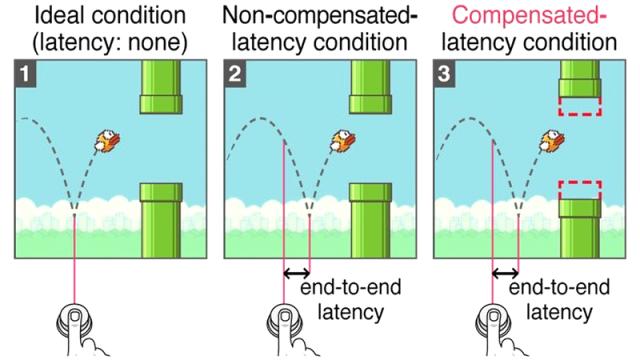Be it from a bad controller, an over-taxed computer, or troubles with a network connection, lag—also known as latency—has been plaguing gamers for decades. Responsive controls are crucial for victory in any kind of game requiring quick reflexes, but researchers have come up with a novel way to eliminate lag. Instead of tweaking endless settings or upgrading hardware, the game itself automatically adjusts to give players a fair chance when increased latency reduces their odds of winning.
The new approach, created by researchers at the Korea Advanced Institute of Science and Technology and Finland’s Aalto University, is still in its earliest stages, so instead of applying it to complex online first-person shooters like Fortnite or Overwatch, it’s been studied on a much simpler game: Flappy Bird. It’s about as crude as modern games can get, but Flappy Bird was so popular and addictive because it was so challenging. It required fast reflexes and flawlessly timed screen taps to get the bird through the gaps in the pipes and progress through the game.
There wasn’t a smartphone on the market that struggled to run Flappy Bird, and they’ve only gotten more powerful since that game disappeared. So the researchers artificially introduced some lag between the moment when a player taps on the screen, and when the bird responds and ascends again. This allowed the researchers to study how lag affected a player’s success, and in turn, develop a model that could be used to then predict their success given the level of latency affecting gameplay.
Those predictions were then used to physically alter the obstacles in Flappy Bird on the fly, shrinking the pipes and increasing the distance between them to compensate for the reduced responsiveness in the controls and increase the player’s chances of success. It sounds a bit like adaptive cheating, but most games are developed with the assumption that frame rates and the responsiveness of controls will always be ideal, when in reality players often have to decrease graphics settings or tweak the game clock and how quickly it plays to compensate, which can diminish the experience.
It’s a big leap between adjusting the distance between a pair of 2D sprites and re-calculating an entire 3D environment on the fly, so while this new approach holds some promise for dealing with lag, it will take a lot more research, and a commitment from actual game developers, for this to be adopted as a solution. But with more and more companies jumping on the game-streaming bandwagon, latency is going to become even more of an issue in the industry moving forward, and simply limiting the availability of these services to those with a fast enough connection isn’t enough.
